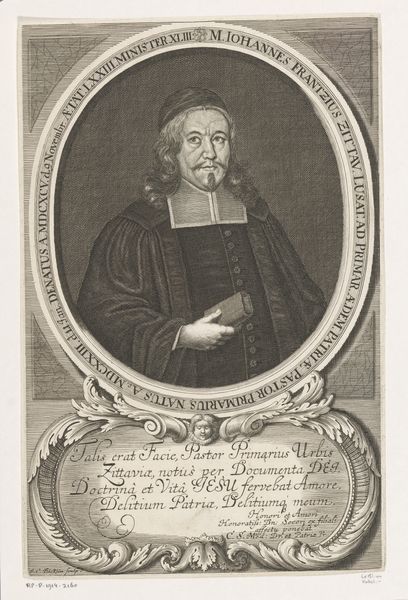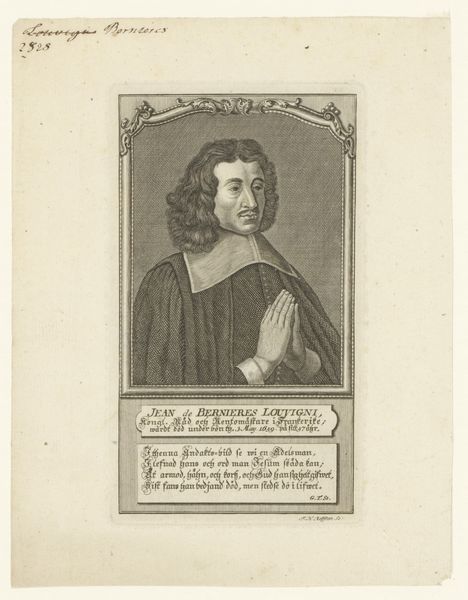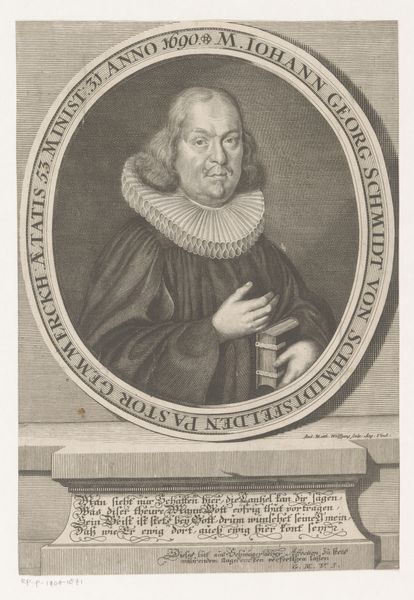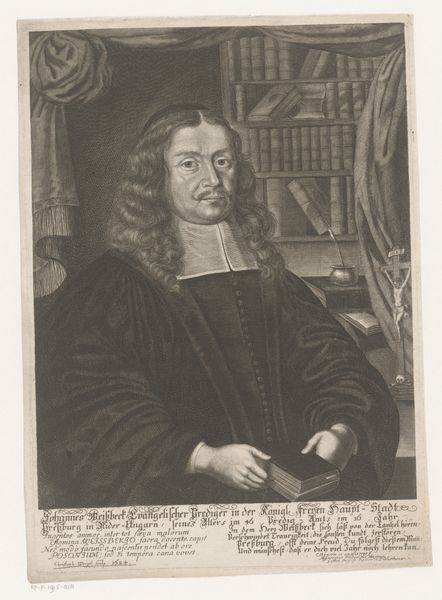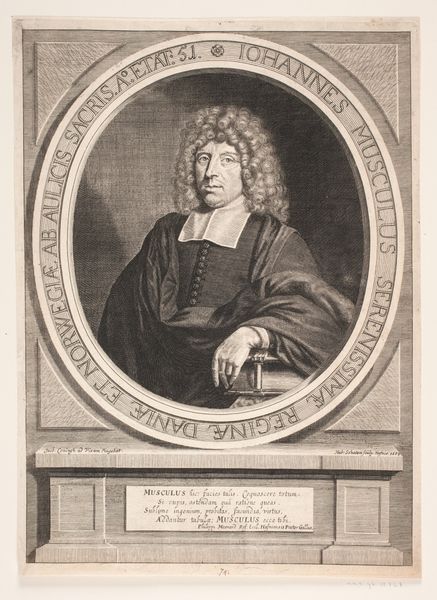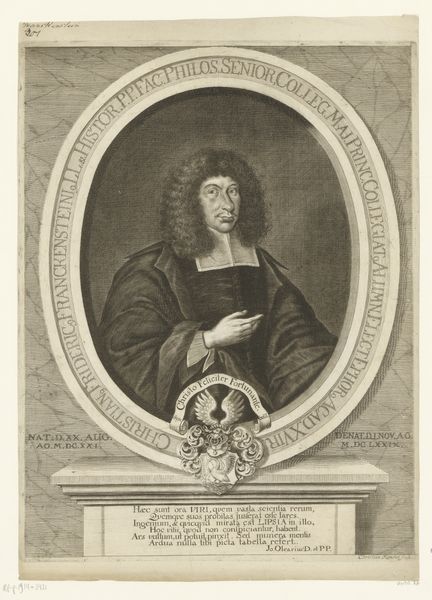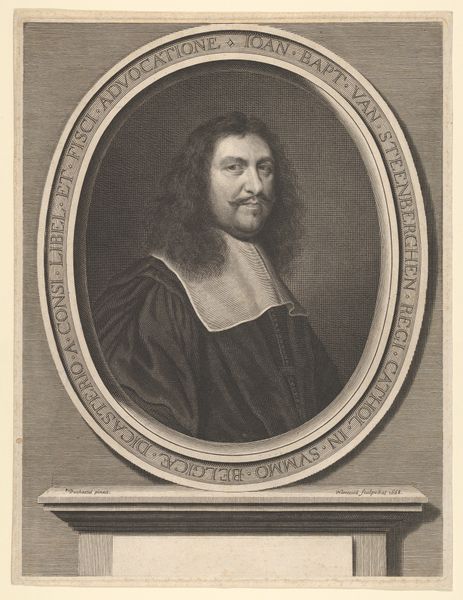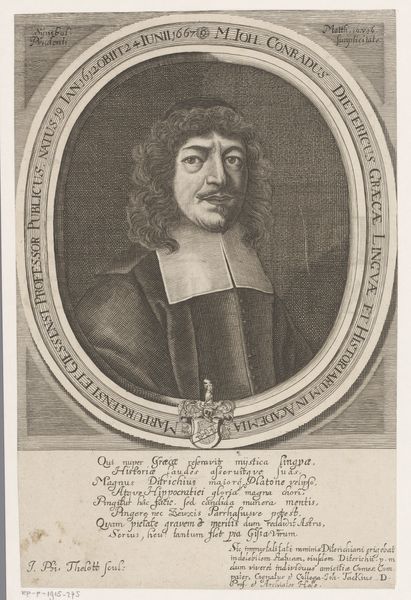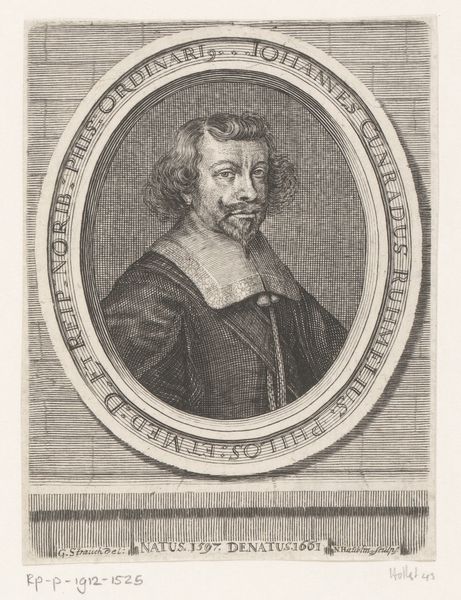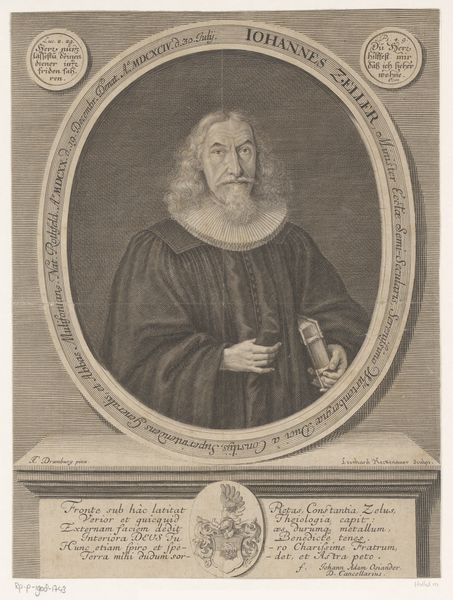
engraving
#
portrait
#
baroque
#
line
#
engraving
Dimensions: height 314 mm, width 217 mm
Copyright: Rijks Museum: Open Domain
Curator: Looking at this engraving, I’m struck by how the sharp lines give it a real sense of precision. Editor: This is a portrait of Jacob Peter Strobel, around the age of 31. Its origin traces back to somewhere between 1701 and 1736, and what intrigues me most is how he's portrayed in this sort of contemplative stance with a very pronounced gesture toward the crucifix. The image is held at the Rijksmuseum. Curator: Yes, the symbolism here is powerful. He's presenting not just himself, but the central object of his faith. The crucifix becomes a visual anchor. Look at the weight the artist gives the lines of the cross compared to everything else; it suggests more than simple piety. Editor: Absolutely. His hand, pointing towards it, that’s a gesture intended to draw your eye there, making that intersection between man and faith incredibly literal, very baroque. But there's a visual hierarchy in the engraving at play too, isn’t there? All these precisely organized lines pull my eyes up towards his face. Curator: Notice too how he’s dressed as a pastor, Natus Gefresi, the text tells us; it also gives his age at the time, quite rare for portraits of this era, and age is important symbolically here. He's clearly not ancient, placing more emphasis on living piety rather than earned or venerable wisdom. What do you make of that, how it plays into the piece's purpose as cultural artifact? Editor: That connection with the man’s specific stage of life gives a fascinating angle. I hadn't considered how his age plays a crucial role to how we should look at this portrait. He seems to be a model to emulate for younger people within the congregation. I'd like to understand a bit better the emotional responses this work may have generated, and not only for religious people, for members of the subject’s circle. Curator: Precisely. These lines and their purpose: cultural memory. What was once admiration becomes historical document. Editor: So much precision to explore, it's fascinating to think about who all those lines are pointing to, ultimately.
Comments
No comments
Be the first to comment and join the conversation on the ultimate creative platform.
